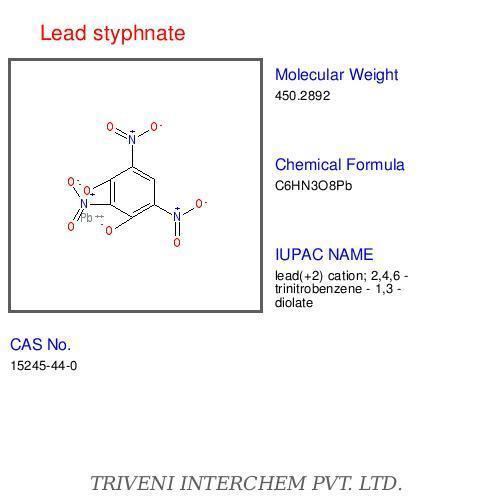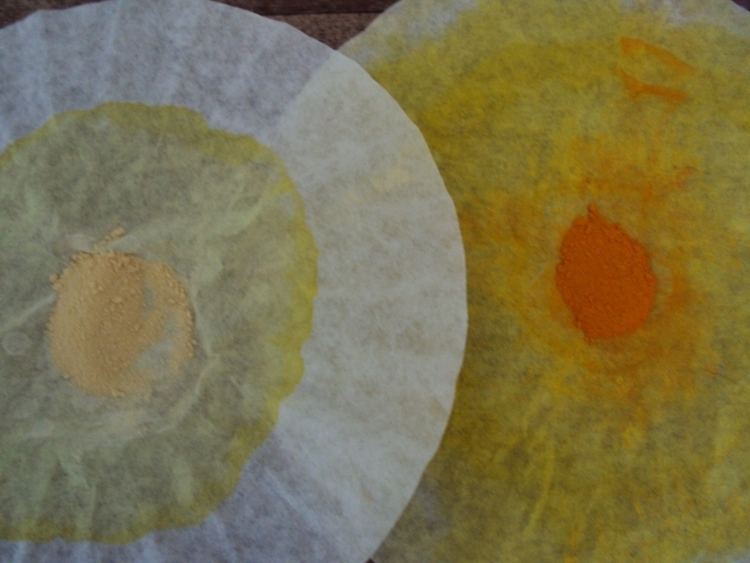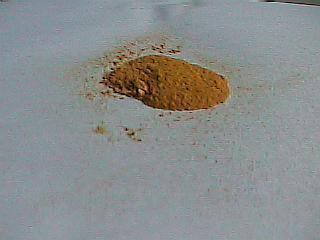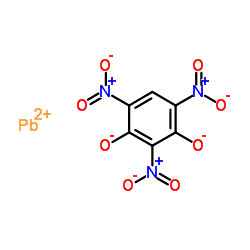Formula C6HN3O8Pb Density 3.02 g/cm³ | Molar mass 450.288 g/mol | |
 | ||
Lead styphnate (lead 2,4,6-trinitroresorcinate, C6HN3O8Pb ), whose name is derived from styphnic acid, is an explosive used as a component in primer and detonator mixtures for less sensitive secondary explosives. Lead styphnate is only slightly soluble in water and methyl alcohol Samples of lead styphnate vary in color from yellow to gold, orange, reddish-brown, to brown. Lead styphnate is known in various polymorphs, hydrates, and basic salts. Normal lead styphnate monohydrate, monobasic lead styphnate, tribasic lead styphnate dihydrate, and pentabasic lead styphnate dehydrate as well as α, β polymorphs of lead styphnate exist.
Contents
Two forms of lead styphnate are six-sided monohydrate crystals and small rectangular crystals. Lead styphnate is particularly sensitive to fire and the discharge of static electricity. When dry, it can readily detonate by static discharges from the human body. The longer and narrower the crystals, the more susceptible lead styphnate is to static electricity. Lead styphnate does not react with metals and is less sensitive to shock and friction than mercury fulminate or lead azide. It is stable in storage, even at elevated temperatures. As with other lead-containing compounds, lead styphnate is toxic owing to heavy metal poisoning.

Lead styphnate detonation
Preparation

Although never substantiated, lead styphnate may have been discovered by Peter Griess (of Griess test fame) in 1874. In 1919, Edmund Herz first established a preparation of anhydrous normal lead styphnate by the reaction of magnesium styphnate with lead acetate in the presence of nitric acid.
{C6N3O8}MgH2O + Pb(CH3CO2)2 → {C6N3O8}PbH2O + Mg(CH3CO2)2Structure

Normal lead styphnate exists as α and β polymorphs, both being monoclinic crystals. The lead centres are seven-coordinate and are bridged via oxygen bridges. The water molecule is coordinated to the metal and is also hydrogen-bonded to the anion. Many of the Pb-O distances are short, indicating some degree of covalency. The styphnate ions lie in approximately parallel planes linked by Pb atoms.
Properties
Its heat of formation is -835 kJ mol-1. The loss of water leads to the formation of a sensitive anhydrous material with a density of 2.9 g cm−3. The variation of colors remains unexplained. Lead Styphnate has a detonation velocity of 5.2 km/s and an explosion temperature of 265-280 °C after five seconds.
Applications

Lead styphnate is mainly used in small arm ammunition for military and commercial applications. It serves as a primary explosive with gunpowder, which will not ignite upon a simple impact. Lead styphnate is also used as primer in microthrusters for small satellite stationkeeping.

